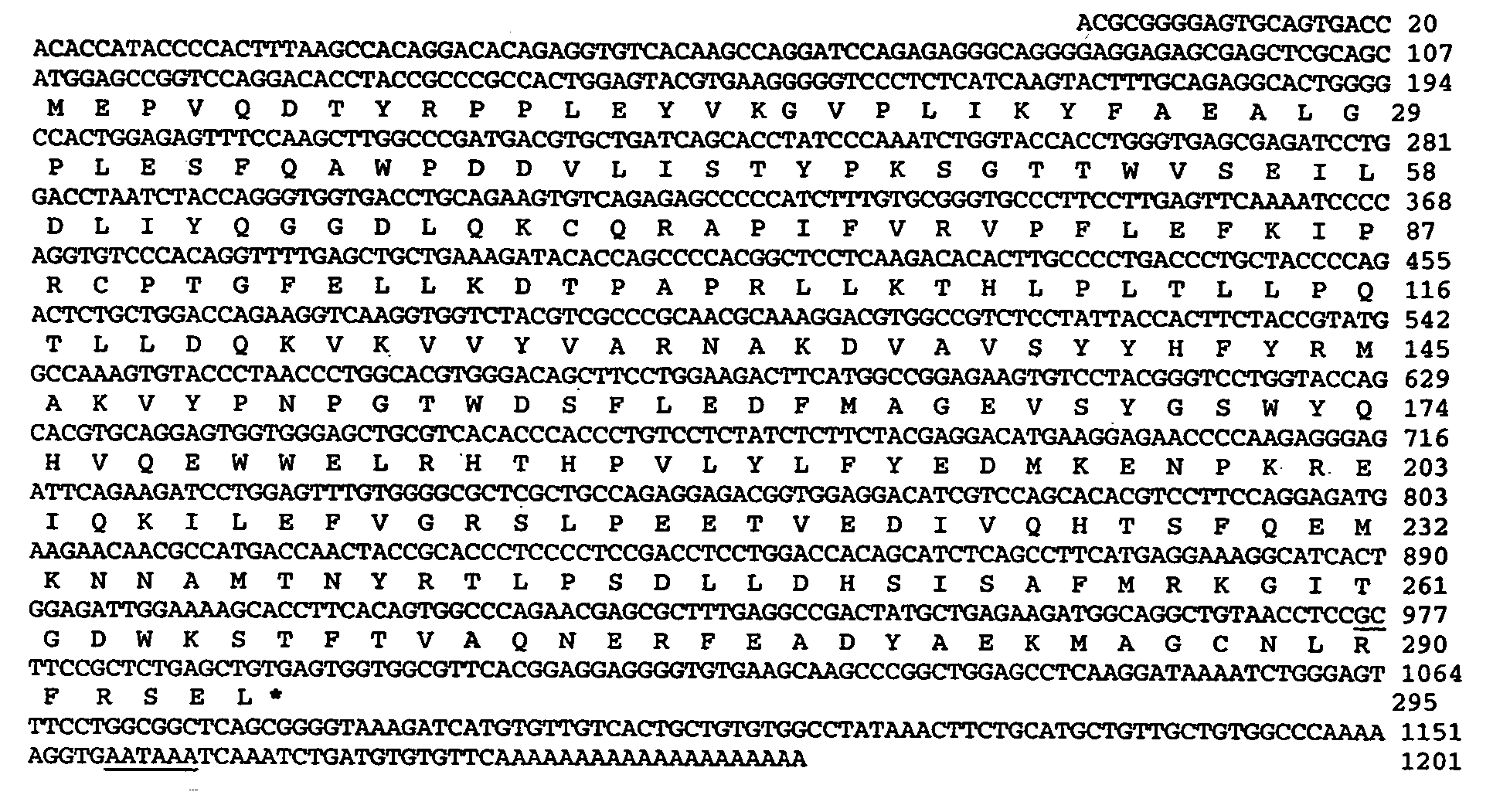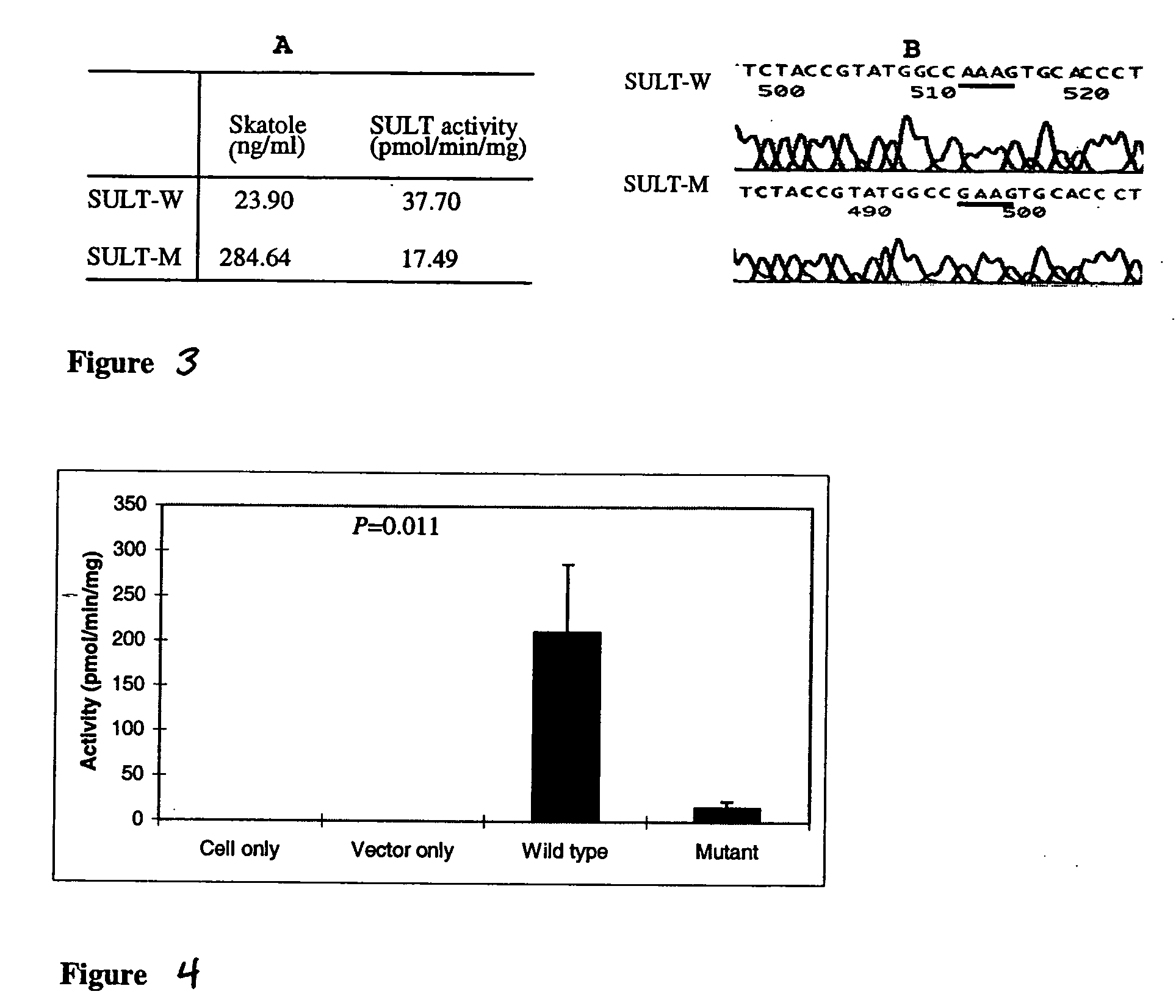Genetic markers for skatole metabolism
a skatole and gene technology, applied in the field of genetic differences detection among animals, can solve the problem of not sufficiently explaining the reasons for the variation in fat skatole concentration in pigs
- Summary
- Abstract
- Description
- Claims
- Application Information
AI Technical Summary
Benefits of technology
Problems solved by technology
Method used
Image
Examples
examples
[0098] Tissue Samples
[0099] A liver tissue was obtained from a male pig for construction of cDNA library. To identify genetic polymorphisms in SULT1A1 gene, liver tissues were obtained from sixty-nine intact male pigs from a variety of breeds, including Yorkshire, Duroc, Landrace, and Pietrain, as well as crosses between Landrace and Duroc, Large White and Duroc, and Large White and Pertain. The animals were slaughtered at an average live weight of 144±33 kg. A sample of liver was taken immediately following exsanguination, frozen in liquid nitrogen and stored at −70° C. before use. For measuring the expression profile of SULT1A1 mRNA, tissues including spleen, thymus, liver, lung, muscle, kidney, small intestine, heart, ovaries and testis were collected from one Landrace boar and one Landrace female that weighed approximately 100 kg.
[0100] Measurement of Skatole Level in Fat
[0101] A backfat sample was collected at the midline point of 11th rib and frozen at −20° C. until assayed...
PUM
| Property | Measurement | Unit |
|---|---|---|
| Fraction | aaaaa | aaaaa |
| Fraction | aaaaa | aaaaa |
Abstract
Description
Claims
Application Information
 Login to View More
Login to View More - R&D
- Intellectual Property
- Life Sciences
- Materials
- Tech Scout
- Unparalleled Data Quality
- Higher Quality Content
- 60% Fewer Hallucinations
Browse by: Latest US Patents, China's latest patents, Technical Efficacy Thesaurus, Application Domain, Technology Topic, Popular Technical Reports.
© 2025 PatSnap. All rights reserved.Legal|Privacy policy|Modern Slavery Act Transparency Statement|Sitemap|About US| Contact US: help@patsnap.com



